Want to help the planet (and yourself)? Take these easy & fun steps.
The crises nature is facing all too often provokes anxiety and helplessness from us in response. But Professor Miles Richardson’s brilliant book ‘Reconnection: Fixing our broken relationship with nature’ provides hope and practical steps.
The state we’re in
Please bear with me. You might find this first part a depressing read, but there is good news coming if you keep reading!
Since my early childhood in the 1980s I’ve known that carbon pollution was causing ‘the greenhouse effect’, that increasing temperatures were on the way and that they spelled huge problems for the planet’s inhabitants, including us humans. It was scary. I think I was probably aware of it earlier than most, because my Dad was a climate physicist (he’s since retired). When I was a young child he was working on a project for the European Space Agency that involved creating instruments to measure sea temperatures from space. I really remember the pretty but ominous rainbow coloured images that were made with the data – showing the sea temperatures already on the rise.
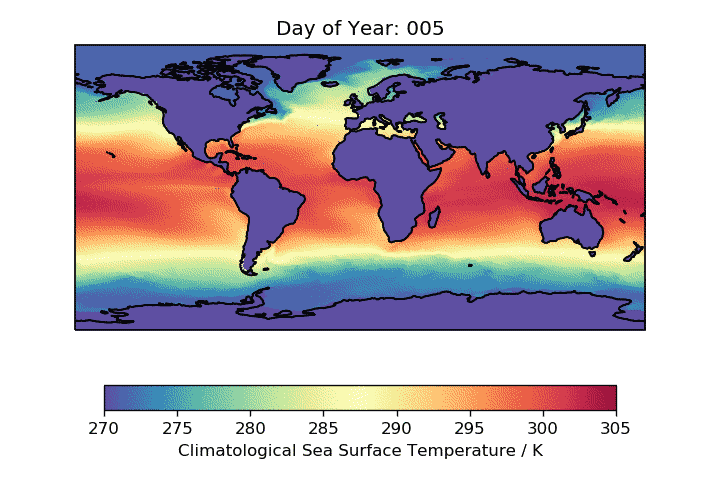
And Dad must have talked to me about it in some detail as I remember writing a story at school set in the future about the rising sea levels and living on a string of islands that had been the South Down hills near where we lived. So for my whole life it’s felt like these effects were on their way. And now, 35 years on, they’re here. As predicted.
Wildlife is already dying from the increase in sea temperatures (just this week there were reports of mass coral reef damage). Wildlife on land is no safer, as wildfires are ravaging Europe and the US. This year, an ‘El Nino’ year, has already been the hottest year since records began.
On top of this man-made disaster, we are experiencing a collapse in biodiversity, often due to destruction of habitat. This is something that’s been happening since the industrial revolution but has radically sped up in the last 50 years in line with increased human population and consumption.
From Wikipedia:
The World Wildlife Fund in 2022[36] reports an average population decline of 68% between 1970 and 2016 for 4,400 animal species around the world encompassing nearly 21,000 monitored populations.[37] Of 70,000 monitored species, some 48% are experiencing population declines from anthropogenic pressures (as of 2023), whereas only 3% have increasing populations.[38][39][40]
This is a shocking global loss of all species including insects, fish, amphibians, reptiles, birds and mammals.
Ok, time for a quick check in? Are you wanting to stop reading because it’s SO depressing?
You’re not alone. I think because it’s SO upsetting, it’s not something that we’re talking about very much, let alone mourning. But that also means we’re not engaging with the solution.
And there is one…. And it’s fun and enjoyable….
I want nature to be in a healthy state. I want my children and their children to experience a hospitable climate and abundant biodiversity. I’m sure you do too.
Both of these crises have been brought about by the actions of people. And, whilst it often feels overwhelming and hopeless that things will change, we must remember that if people created these changes, people can also affect great change in a more positive direction.
But how on Earth do we make people, and societies change their behaviours?
Step in Professor Miles Richardson, Professor from the University of Derby’s Nature Connection department and his book; ‘Reconnection: Fixing our broken relationship with nature’
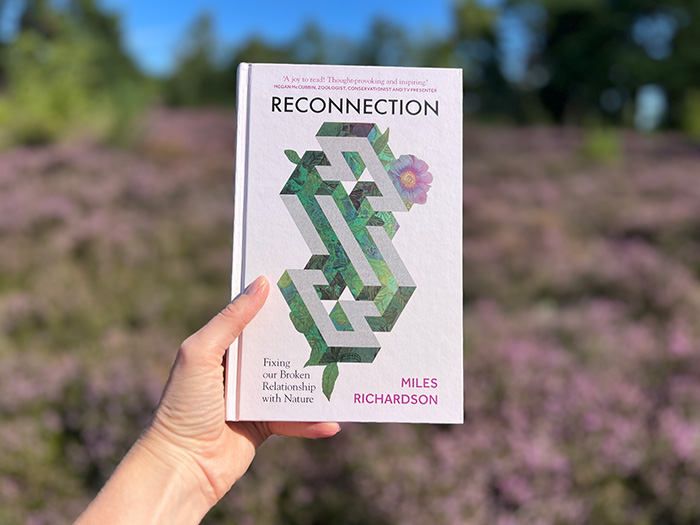
In it he makes a clear & compelling case backed by numerous scientific studies that it is in fact our RELATIONSHIP with nature that must be fixed in order for our behaviours to change and for us to act in more caring and responsible ways towards nature. It simply doesn’t work to focus on behaviour changes themselves, because our behaviour towards nature will only really change as a result of how much we feel a positive emotional connection to nature.
So our behaviours towards nature are the symptom of our relationship with nature. A broken relationship means a lack of care from us.
We need a loving relationship with nature so that we’ll take care of it (and allow it to take care of us).
We need to reconnect with nature.
I’ve cited Professor Richardson’s research in several other blog posts because, since my 20s, I’ve been aware that nature connection is crucial to my own wellbeing and I’ve made it central to my art practice. So it’s safe to say, I couldn’t put this book down.
So what is ‘Nature Connection’?
Prof Richardson defines nature connection as:
‘A realisation of our shared place in nature, which affects our being – how we experience the world here and now; our emotional response, beliefs and attitudes towards nature.’
So it’s about really feeling that you are a part of wider nature, and experiencing the joyful & calm feelings that spring up when you do. There’s a mindfulness to it. This isn’t about getting out into nature and exercising with nature as a pretty backdrop. This is about being present emotionally. As I wrote about before, it’s even been shown to be possible to experience enhanced wellbeing from pictures if you’re not physically in nature.
Good for our wellbeing
The very good news about cultivating nature connection is that in doing so we personally experience huge boosts in our wellbeing, especially in our ability to regulate our emotions (to calm down when we are anxious or upset). Richardson cites several studies showing this. One was the amazing discovery that:
Simply viewing an image of roses for three minutes has been found to calm the prefrontal cortex and produce a positive physiological response, this time a reduction in the sympathetic nervous activity associated with threat and anxiety.’
Can you imagine how much good a few hours of painting some roses based on a photo you took would do you?
And as if this wasn’t enough, we are of course so reliant on nature to sustain us with air, water, food & a hospitable climate that ultimately ‘there is no human wellbeing without nature’s wellbeing’. As Richardson makes clear, there have been huge gains in the West in recent centuries in living standards and life expectancy but ‘without a healthy planet those gains will come tumbling down’.
We used to be connected – to nature and to our emotions
Though we’ve all likely had moments of nature connection, Richardson has us consider the fact that for 90% of human history, we were hunter gatherers. Living mutually with animals and plants, spending just a few hours a day on basic needs and experiencing abundant leisure time. As hunter gatherers, we didn’t store much food either and instead existed in a state of trust that nature would supply us with what we needed.
So much has changed since then, and it’s been relatively rapid. When you compare our lifestyles now: predominantly urban, often with smartphones and other screens to distract us from our surroundings, it feels like a different world. In the UK
‘80% of people have rarely or never watched wildlife, smelled wildflowers or photographed nature. A total 62% rarely or never listened to birdsong or took a moment to notice butterflies or bees’.
The book gives an excellent overview of how the Agricultural Revolution, the Enlightenment and the Industrial Revolutions all contributed to a way of seeing ourselves as separate to nature and the physical world ‘out there’ and as existing within our minds (known as Cartesian Dualism). This in turn led us to tune out from our feelings and emotions which might allow us to connect better with nature if we could tune into them.
This separateness, from nature and from our emotional selves, might feel very normal to our conditioned minds, but it is not the objective ‘truth’. As Richardson describes:
‘It’s important to remember that emotions aren’t just feelings or by-products of life useful for writing poetry. Emotions are a feature of our nervous system, heart and brain that are fundamental to human function, with emotion preceding thinking.’
And I love the poetic way Richardson describes how beauty in nature can lead us to nature connection:
‘The beauty of nature, the simple form of flowers, becomes emotion through the senses. Indeed perhaps it’s more meaningful to say that flowers are what emotions look like, or birdsong is what emotion sounds like – such that nature’s beauty promotes connection with nature across cultures.’
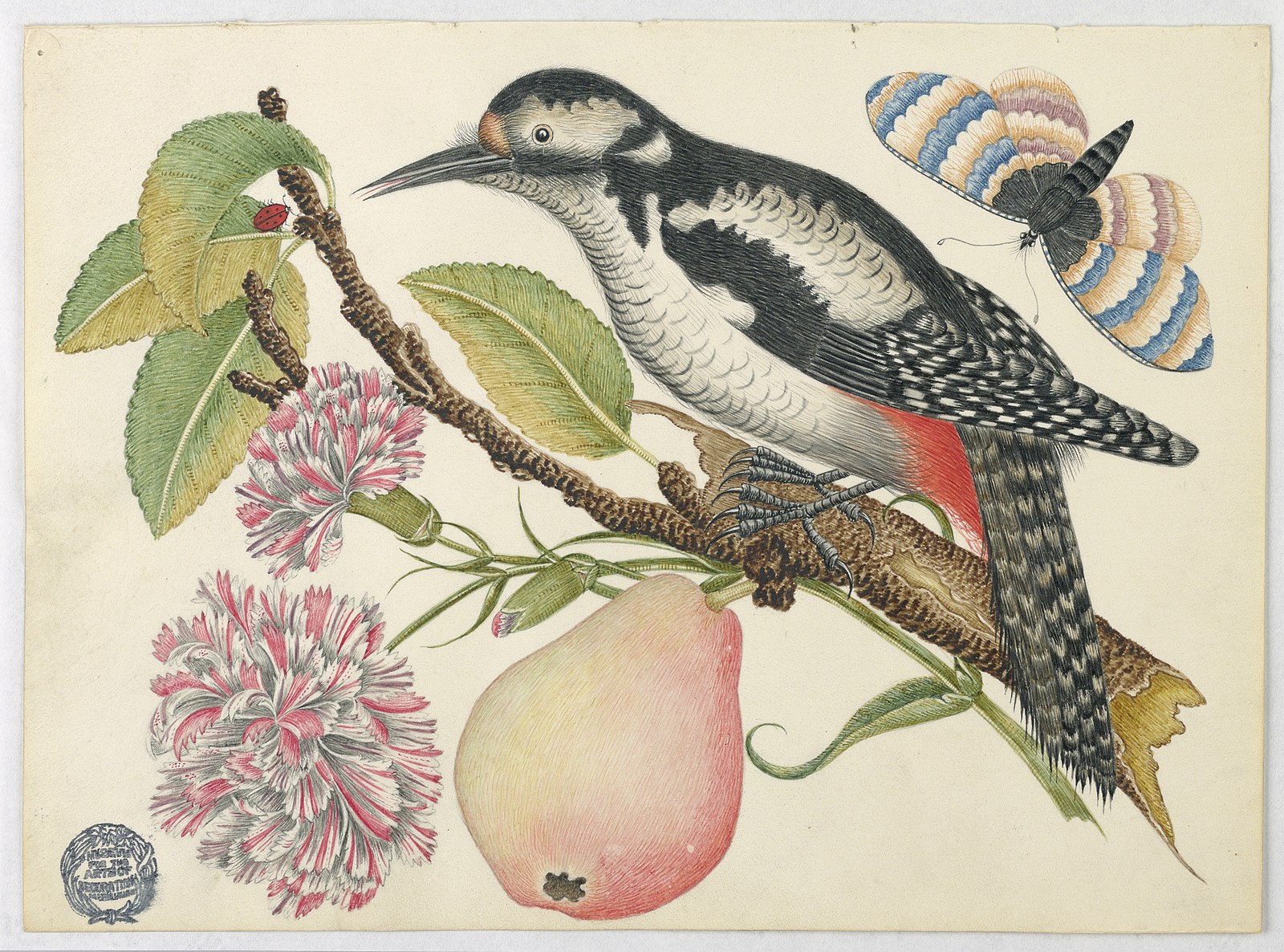
The good news: Reconnecting is a pleasure.
How to do it? Step 1: Notice nature
If you’re part of the Nature Studio community then you may already feel pretty connected with nature. That’s because Richardson’s team’s research shows that noticing nature is a key first step to nature connectedness.
As nature artists – or aspiring nature artists, I expect your camera roll is full of photos you’ve been inspired to take on your walks in nature. I imagine you notice nature regularly and feel the beauty (or is it love?) of it as you do.
And if you sit down to draw or paint one of those photos you’ll likely build your nature connection muscle more too as you soak in and recreate nature’s details & capture on paper the emotion they evoke.
The battle for our attention
But at other times do you also find your attention sucked into your smartphone? Scrolling on social media that’s literally engineered to grab and hold your attention?
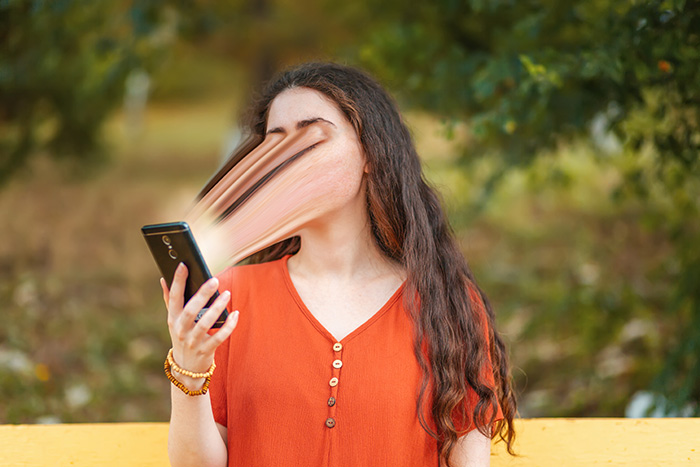
Or do you simply get engulfed by the busyness of your modern life? Does having a garden mean you spend more time mowing and weeding than sitting and watching the wildlife within it?
In the dreary winter months when you’re indoors more, do you go many days without connecting with nature?
In our modern world, nature’s often on the losing side of the battle for our attention. And sadly, as so much biodiversity has been lost we can enter a negative feedback loop where there is also less nature around to notice.
4 Ways to notice nature & connect
Again, what’s great is that the ways to notice more nature and connect more are actually enjoyable and provide a tangible boost to wellbeing (especially bringing about calm) when we do them:
1. Write down 3 good things in nature that you noticed today
This could be ‘as seemingly trivial as noticing the song of a Robin or movement of a tree in the breeze’ and has been proven by Richardson and his team to lead to significant and sustained increases in nature connectedness and mental wellbeing (specifically calmness) after doing this for only a few days. The act of writing down the 3 good things a day is very important as it adds an extra level of engagement. As we write, we make meaning and feel our experience even more deeply.
When Richardson’s team looked at the ‘good things’ people noticed when they did this, they identified 5 themes. The first was the sensory experience, with people writing about the sights, sounds and smells they encountered.
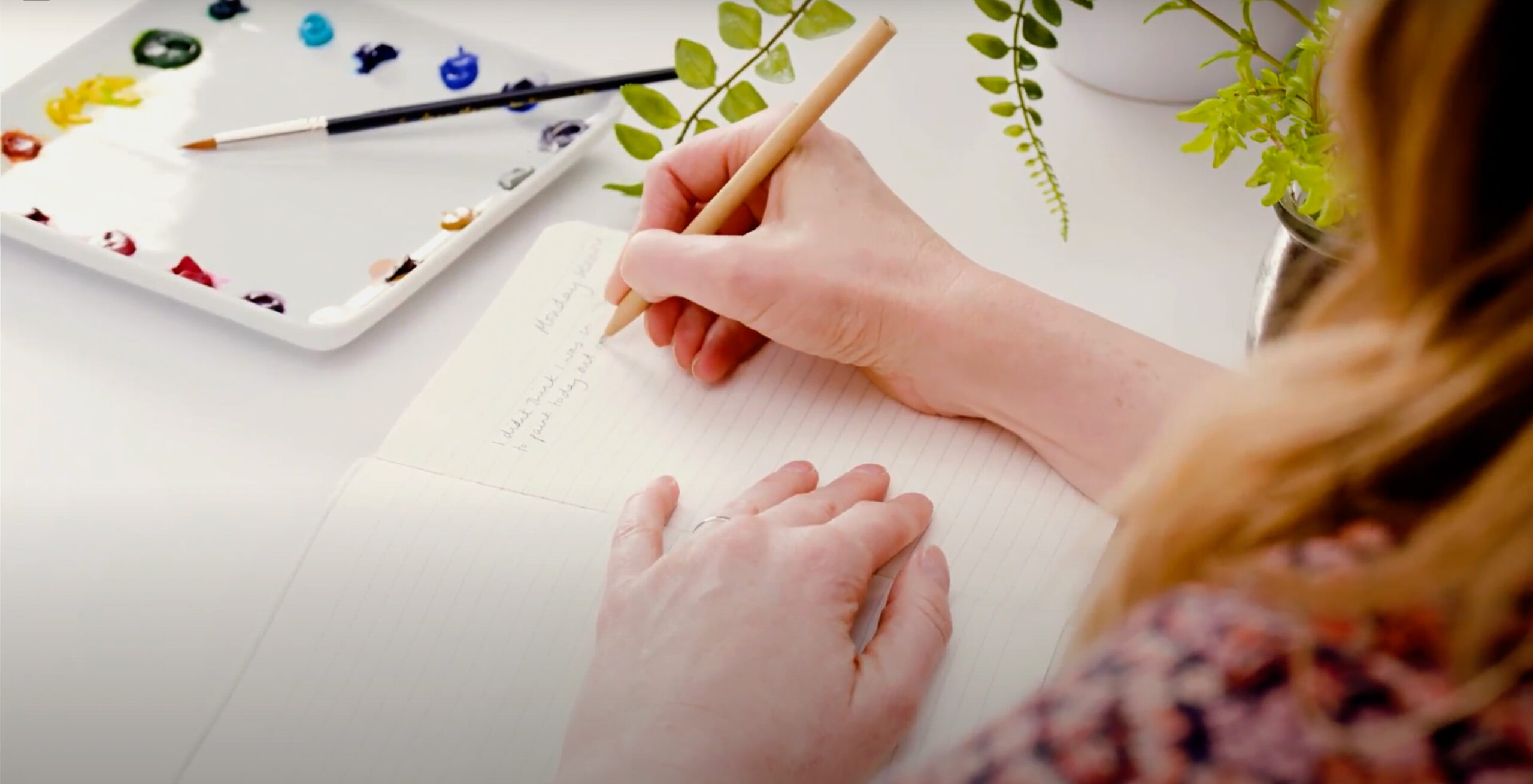
Painting and drawing can help with this
I’d add that as humans, sight is our dominant sense, and as sight perception involves our brains as much as our eyes, learning to see more detail when we draw and paint can actually enhance that sense so much. I experienced this myself when I began botanical painting and members of Nature Studio routinely report that when they start observing the nature subjects we paint together in the tutorials, their visual sense seems to ‘switch on’ in a way they’d not experienced before and they find themselves noticing loads more detail in nature around them. They literally report seeing more colours!
In addition, like writing, art making is meaning-making too (though much devalued in the modern era) and it’s something we’ve been doing since hunter gatherer days. The oldest cave paintings that survive are around 64,000 years old!
2. Take walks where you encounter nature regularly
The research team found that the ‘noticing 3 good things in nature’ activity had even more impact when combined with walking. Walking is something I’ve written about before as a creativity aide, and it’s also great gentle exercise. I walk daily for an hour and find I am far more mindful towards the end of that, often getting inspirational thoughts, feeling better able to concentrate, and very often feeling more nature connected.
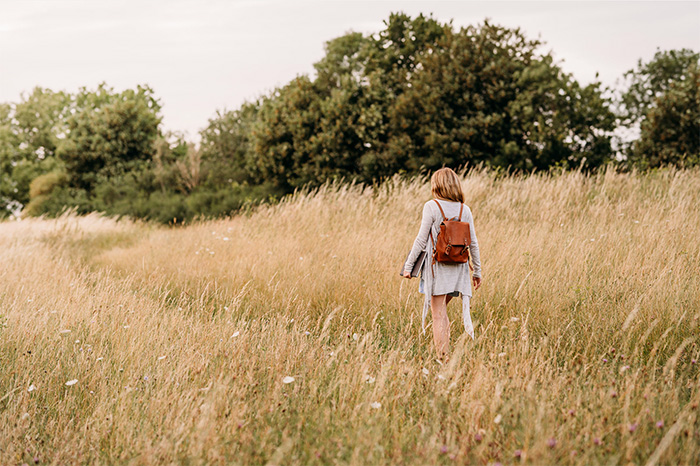
3. Photograph nature for later art-making
I personally find that engaging with the beauty of, usually flowers and plants, when I photograph them feels very connecting with nature. Prof Richardson’s book cites a study that combined writing down as well as photographing things in nature that provoked emotion which was shown to increase nature connection.
And as we’ve seen, you can then get another hit of nature connection when you view or paint from those photos at a later stage.
I’ve noticed a difference in how much connection I feel between working from photos I took myself (where my memory gets activated and I can replay the experience of being with the flower) and working from photos taken by someone else (often the case when I paint wildlife as I’m not a wildlife photographer!). So if you’re someone who often paints from photos they find online, I recommend you take some tips on making the most of your smartphone camera and visit a place in nature – or it could be a garden near you – and experience taking your own.
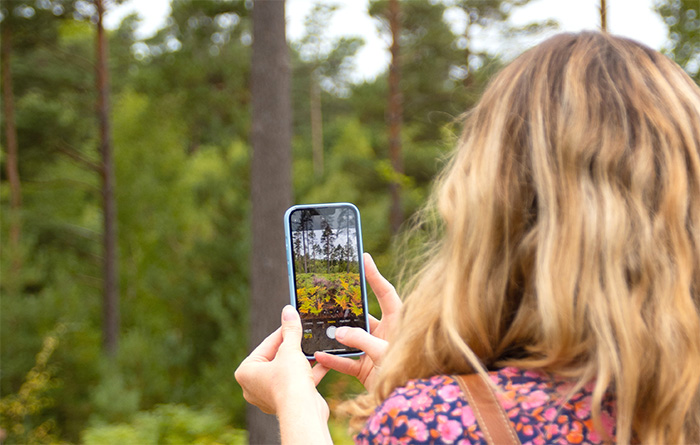
4. Keep a Nature Journal
This wasn’t mentioned specifically in Prof Richardson’s book but you can look to expand on the ‘noticing three good things’ exercise by keeping a nature journal as I discussed with leading educator on the subject John Muir Laws previously . In a nature journal you combine written notes about what you noticed in nature and how it made you feel with sketches of what you saw (they can be very loose, they’re just for you). The activity grows your curiosity (including releasing dopamine in your brain!), wonder & creativity and is deeply connecting. As above, you can also use photos to work from in your nature journal when the weather makes it more appealing to stay indoors to sketch.
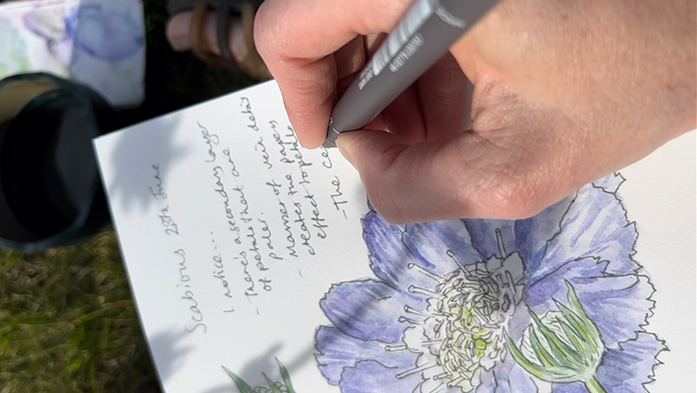
The ‘Butterfly Affect’
These might seem like small steps to take when the crises that nature faces are so large. But Richardson assures us that they are actually subject to what he calls The Butterfly Affect.
The Butterfly Effect is something I remember studying in maths at school – it’s from Chaos theory and describes the notion that the world is deeply interconnected, to the extent that one small change can influence a much larger complex system. So a small butterfly flapping its wings in one place could perhaps cause the path of a tornado thousands of miles away. ‘Affect’ is another word for emotion so Richardson proposes that these simple actions can be felt in our emotions, which can then ‘improve our nature connectedness, mental health and crucially for nature, our pro-nature behaviours.’
Making changes to our behaviour
We all know the things we can do to help the environment, and I’m guessing that because you’re here and reading this, you’re already making an effort to do your bit.
But in addition to ‘pro environmental behaviours’ which focus on reducing polluting/negative behaviours – e.g. taking fewer flights to reduce your carbon footprint or recycling more, Richardson focuses in the book on Pro-nature Conservation behaviours which focus on improving biodiversity.
Increased nature connection will lead to better behaviours in both areas, but many of the pro-nature conservation behaviours have the added benefit of further increasing nature connection and therefore creating a positive feedback loop. Richardson and his team identified two lists of pro-nature conservation behaviours, one of which I’m going to feature in detail below. Often we feel motivated to do something positive for nature but are not sure what the best thing to do is, so this is really useful.
The first list involves getting involved with nature conservation groups locally, picking up litter, and making sure to vote for pro-nature policies and governments.
The second was a list of things to do in your garden if you’re lucky enough to have one and includes – in order of importance for nature:
- Plant pollinator friendly plants More than 87% of flowering plant species require animal pollinators and they’re crucial for food production
- Plant plants with different flowering seasons
- Avoid using insecticides
- Add log piles or other materials that can be used as shelter/homes for wildlife
- Leave an undisturbed/unmaintained area for wildlife
- Maintain plants with berries/fruits This helps feed the birds
- Plant native plants In the US and Australia this has been proven to increase butterfly and bird diversity
- Avoid cutting/trimming hedges during bird breeding season (March-July in the Northern hemisphere)
- Provide food for wild animals such as birds Bird feeding has been shown to be related to connection to nature and well-being, specifically relaxation
Any other ideas?
While I was writing this post I chatted to a guy at a friend’s birthday party (I could have guessed he was nature connected as he was wearing a bold botanical print shirt) who told me he always carries a packet of wildflower seeds with him when he’s out and about in the city he lives, and scatters them in any little nook or cranny he comes across. I love that idea. It probably would have sounded a bit eccentric to me before, but now I just think it’s brilliant. I’d love it if you would share any ideas for pro-nature conservation activities you might have in the comments below.
In conclusion
Pro Richardson’s book is far from simplistic and also looks at what is needed at the social and governmental level for a shift towards more nature connection to become embedded.
But at its heart is a personal message we can all work with:
We can choose to feel more connection with nature. It will do us the world of good and it will do the world massive good too.
As I’ve shared before, I feel nature connection saved my life and I feel grateful for every opportunity I have to engage with nature and deepen that connection.
I hope this post inspires you to connect with nature more today. To read the book you can buy it here (or better, at a local book shop near you!):
As usual, I’d LOVE to hear about your own experiences of connecting with nature, whether that’s through your art practice or through wilding your garden or simply making a point to listen to the birds every day. Sharing your experiences below will inspire us all to feel like we are part of a community who really actively loves nature. Reading your experiences can give us hope that each one of us, through the other lives we touch, can spread the message of nature connection far and wide, doing what we can to give nature, and us humans, a brighter future than is so often forecast.

Share this post!
Browse more blog posts
33 Comments
Leave a Comment
Share this post!
Subscribe to blog updates
Blog Updates
The information you provide here will be used only to deliver the email course, along with other relevant updates from me. You can unsubscribe anytime. Click here for our privacy policy.

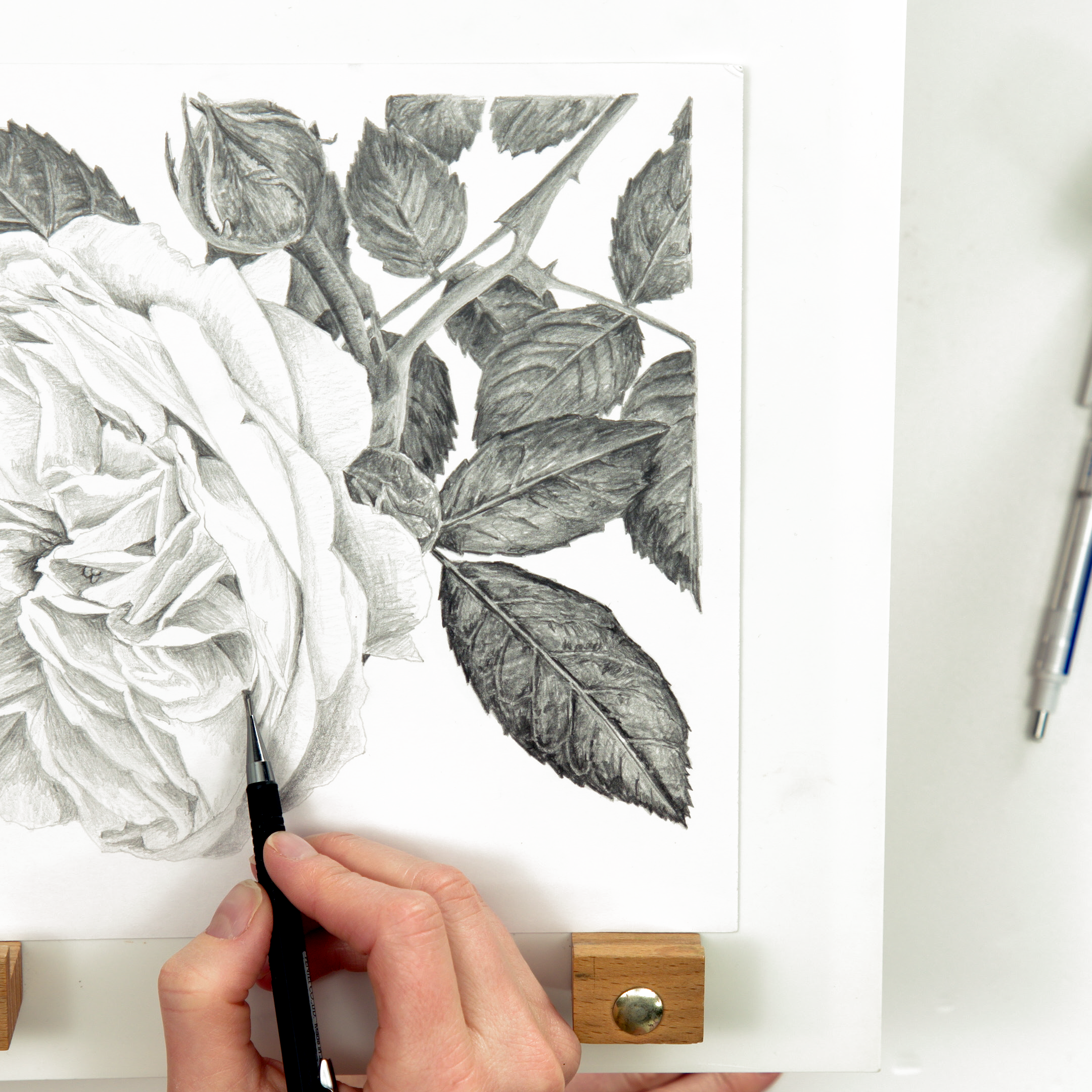
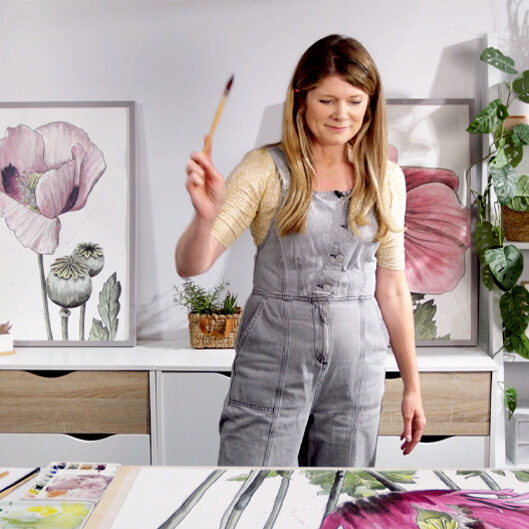
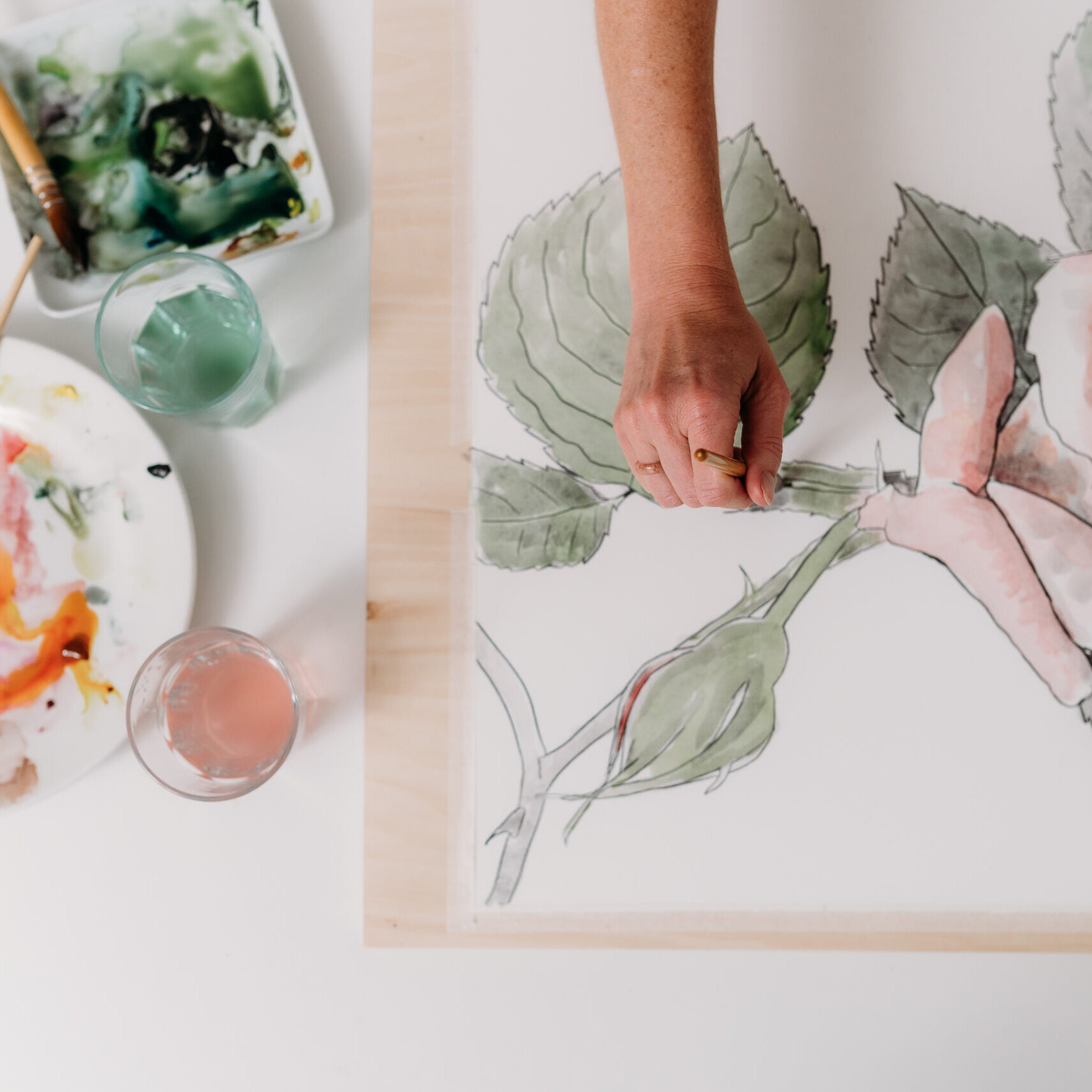
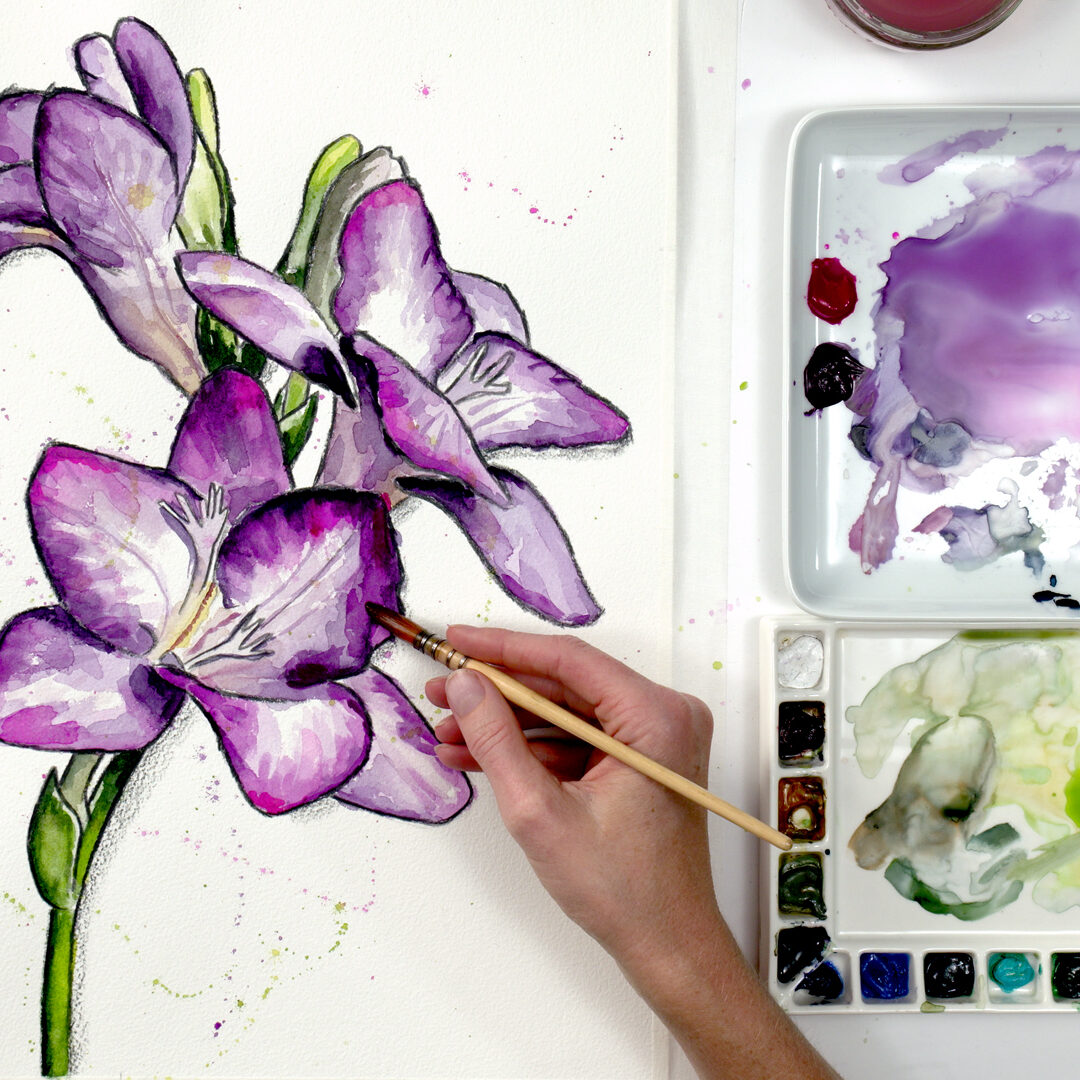
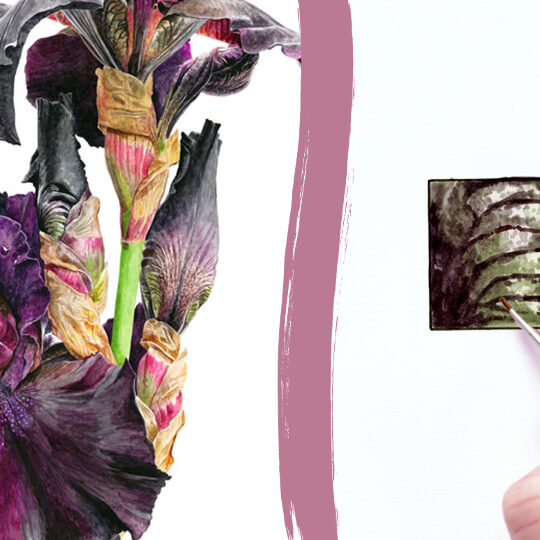
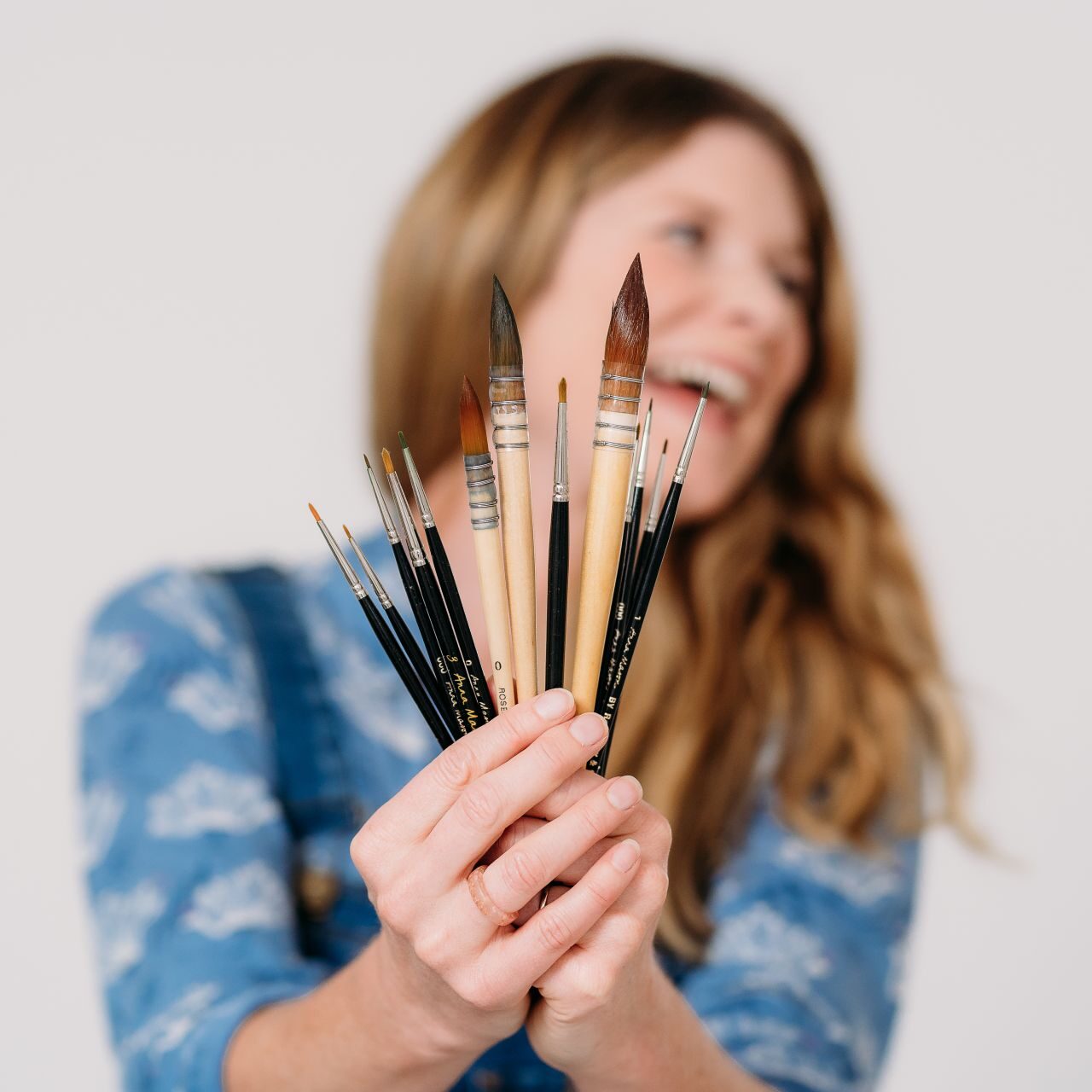
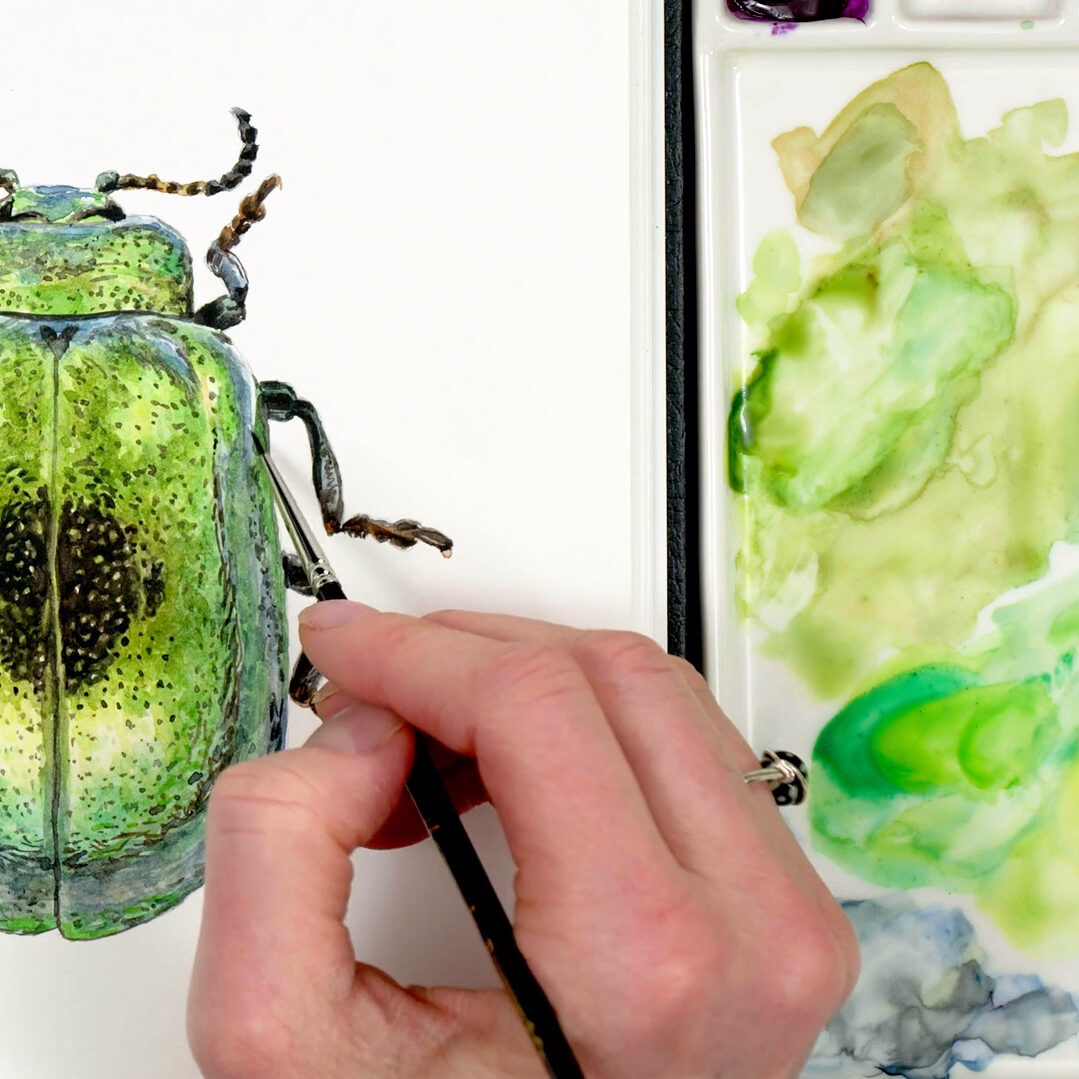
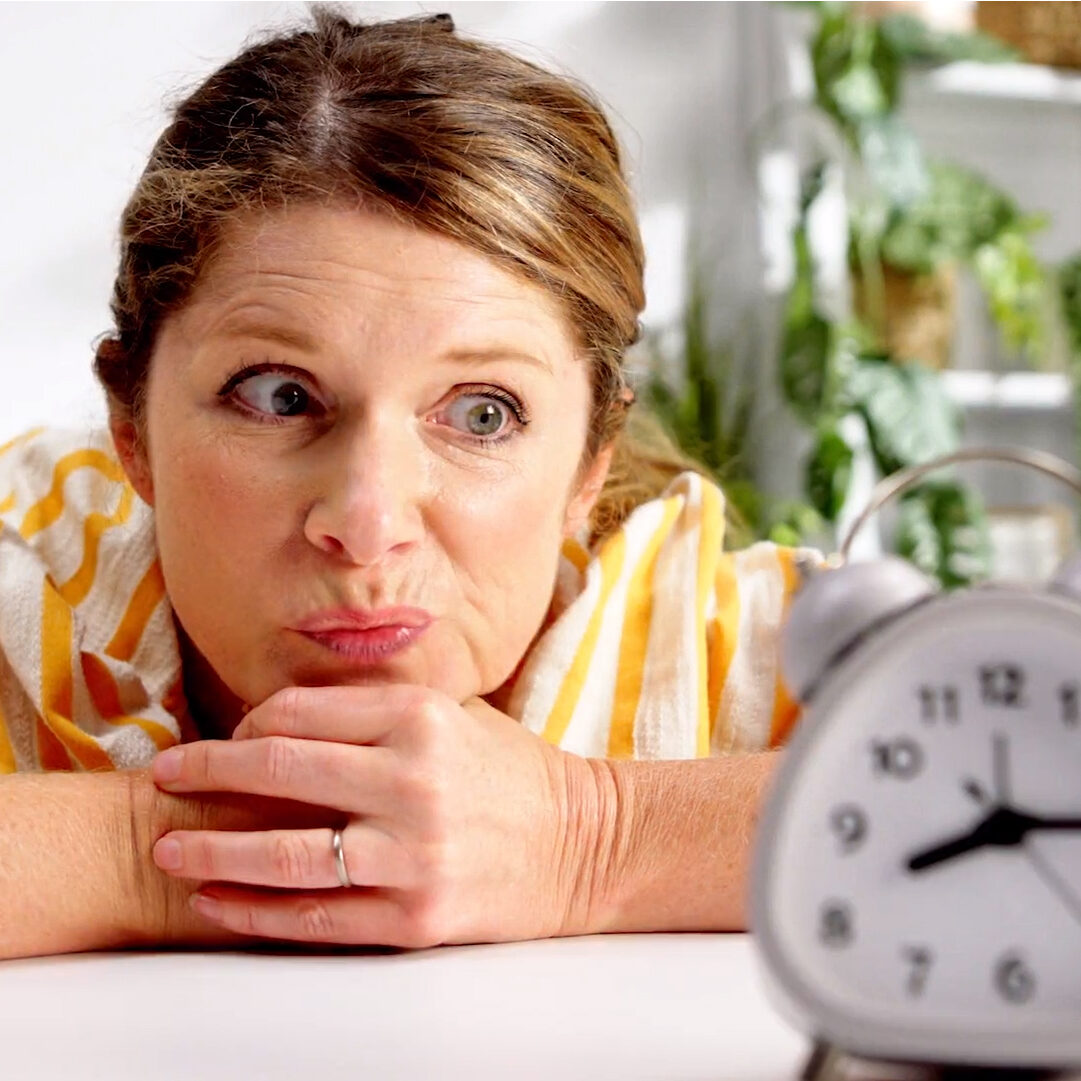
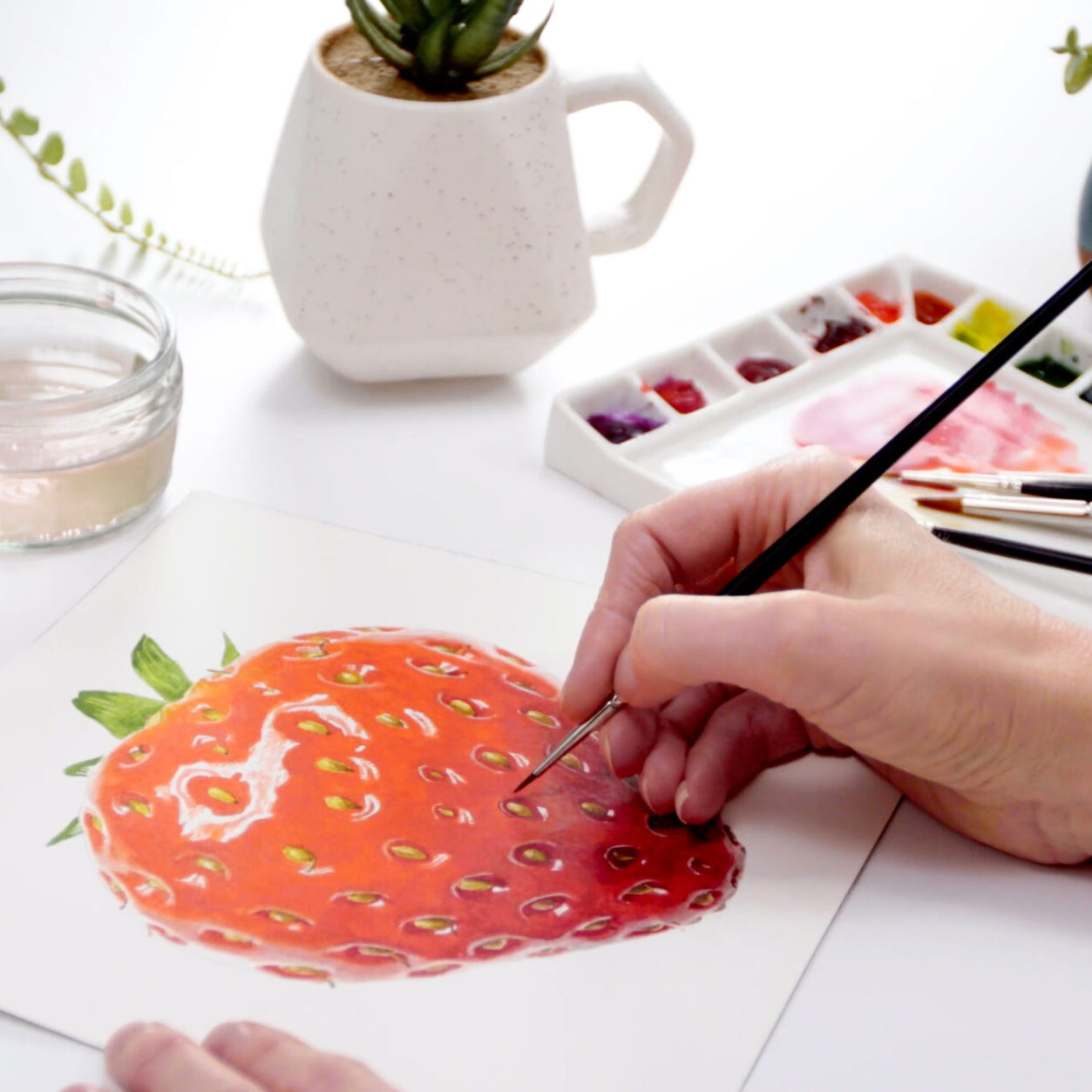
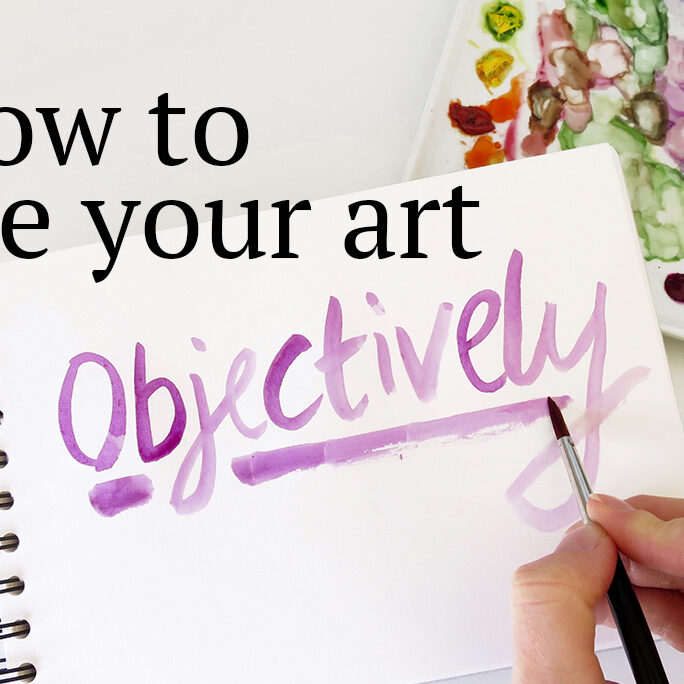
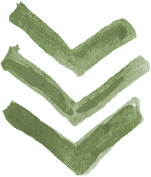
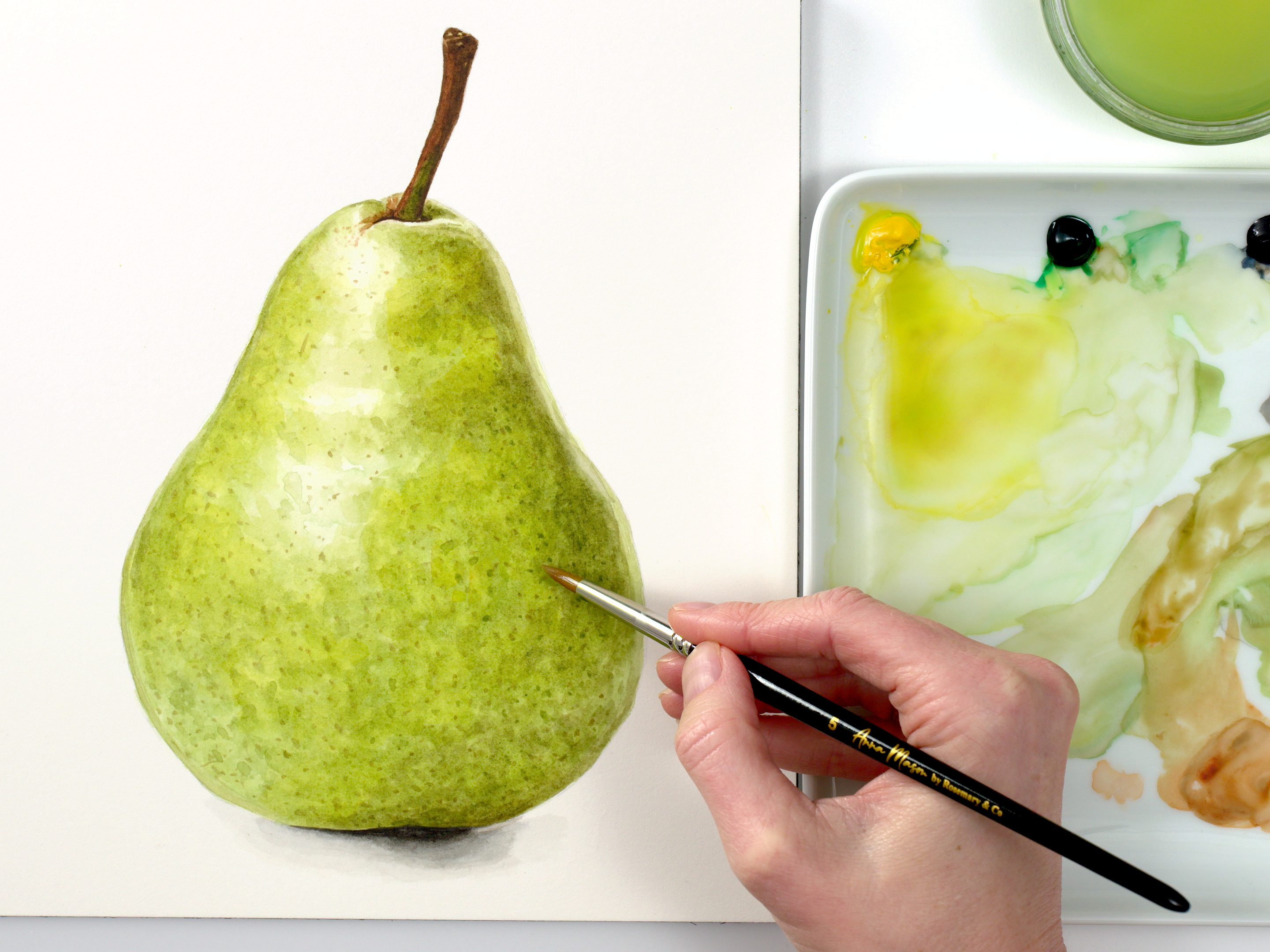

I love your writing! sometimes it is as if you are writing down my thoughts. thankyou for writing these thought provoking notes…we need more people to think this way…to realize how important that connection with nature is, as WE are all nature.again, thankyou for making my day.
Thank you Gisela. It feels great to have touched you. A kindred spirit x
Gosh – where do I start every time someone tells me that wildfires have broken out somewhere I always respond with “this is our planet dying“. Put the wonderful brave people out there who are trying to fight for our planet survival. A Pinterest abominably try looking on YouTube and see how Stop Oil protesters have been physically and verbally abused all because it’s causing someone to be late for work. It’s a joke! I’ve tried to make such huge changes to my life, i.e. no longer using single use plastics (I was horrified to notice how much of these products are in bathroom, beauty and kitchen products). Being kind to wildlife is so important- on discovering a wild bumblebee nest in my garden, I diligently left it alone and loved watching them in my garden. There was one huge Bee who was clearly struggling, and after putting down a little bit of sugary water, it was amazing, beautiful and marvellous to see this amazing creature become more active. As a thank you, she allowed me to take really close-up photos of her and I even have a video. What amazes me is the detail on Bees which I have been previously unaware of. You could clearly see her using her proboscis. We all need to take a stand. Not just people are brave Mavericks such as Greta. This is our home and home for our children and their children’s children who need to look past money but unfortunately greed is Olivia visible traits of mankind. I could sit here and go on all day, but I won’t. I was going to share the bee video but I’m unable to on here. So for any of you who are on Instagram look for LittleGlassDen on Instagram where the video has been posted. Please anyone reading this who has not made a change, do so even if it’s changing one product. Thank you for taking the time to read this. Regards, Wendy
Please excuse any spelling errors are use speech, recognition software which reads correct, but then seems to change things just at the time of posting. Wendy
Thank you, Anna, for such a wonderful and informative read. I appreciate you taking the time to share your artistic story woven with eye-opening facts and suggestions for healthier options.
You’re very welcome Cheri, I’m glad you enjoyed it.
Thank You Anna! What a great read and insight. It’s also a good reminder how healing nature is for us. I love the idea of carrying wildflower seeds to plant! Feeding the birds with flowers and berry bushes that I plant makes me feel good to know I’m helping them. For the last 3 years I’ve been teaching myself how to identify birds by their song. With a smart phone it’s simple to Google any particular bird and add audio to hear their song. My Dad used to mimic some of the songs and get a response from the bird!! I too can do a few. It’s a wonderful feeling to be able to connect in such a profound way!! I hope some of you will try to teach yourself how to identify birds by sound. Then when you go for a walk you can know what birds are singing around you whether you see them or not. It’s a Beautiful Connection!!
Love to All, Diane Ruggles ❤️
Hi Anna,
Your beautiful creativity could not exist without the example(s) of creation of our Creator God. All of my watercolor paintings(like yours) reflect elements of what has been created for our enjoyment. I marvel at the depth of color, symmetry, and variation that He provides us. Imagine the numbers of butterflies, birds or fish that are so different and detailed. Nature reflects One who establishes a feast for our senses. Thank you for reminding us in your paintings of majesty of the One who made it all possible.
Nicely said.
Thank you, Kim….loved reading your comments on the One who created it all for our enjoyment and benefit. So amazing that He created it and then gave us eyes to see the beauty, all of our senses to enjoy and appreciate all of nature.. A beautiful gift. Blessings.
You are right about climate change being scary, perhaps that is why people seem to be ignoring it and not demanding rapid action from our government.
Thanks for sharing your awareness journey; I am willing to share too. I have always enjoyed nature – through long walks as a teenager growing up, camping trips and Scout experiences, etc. One idea I will share that has majorly enhanced my awareness is scuba diving. You are in a totally different world of sight and sound and sensory body experiences that are unimaginable. Weightless suspension as you look around at colors, fish, plant life, corals…. Hearing fish chewing on the corals. Watching manta rays gently gliding by. As you said, sitting in nature and just observing is amazing. Thanks so much for evoking an awareness that we all can take advantage of. I think I will order the book for my 6 adult children. They are of an age where this truly matters to them and their children now. Bless you, Anna.
Thanks Joan. Scuba diving sounds amazing. I also love to snorkel if I get the chance.
Thanks so much, Anna, for bringing together what we all experience when we paint nature, just at different levels. Living among tall pine trees and parks nearby, it’s been easy for me to benefit from nature’s effects…harder by the day at 71. I take photos of shapes (the pavilion among the trees) and colors (the water lilies on the small waterway) that I see daily along the way. Imagining paintings I “aspire” to do one day, my heart beats fast from the brisk walk, but I breathe easier. Nature is subtle but powerful!
Thank you for that beautiful description of your time in nature Sandy. Subtle but powerful is right I’d say.
Hi anna, It’s lovely to read your blogs every week so informative, like you i also love walking in the country side and taking special photos of wild life.
At the moment we have lots of different butterfly’s i’ve never seen so many we have a beautiful buddleia in the garden that they feed on.
Keep up the good work.
I’m not sure if you’re in the UK Lesley but several butterfly species are having a bumper year here. I see little Common Blue everywhere at the moment. So gorgeous.
Wonderful post, as usual Anna! I will check out the book…. I have been slowly incorporating more native plants in my garden and have noticed a vast increase in pollinators. To the extent possible, I use organic gardening techniques. It’s been a process of learning more, and making incremental changes which I believe we can all engage in without becoming overwhelmed. I have learned so much from taking classes offered at the botanical gardens (some of which can also be found online, remotely) and am hoping to begin a program to become a certified naturalist and get more involved in local conservation projects. I am really loving some of the new directions your website is taking. So glad to be a part of it!!
Your garden sounds great Debra – so good that you’re really getting into making it so nature friendly and becoming so knowledgeable.
Thank you Anna. I love your realistic artwork and always recommend you when people ask for artists. My garden is new to me and with 5ft of grass.it’s been very hard work for a pensioner. But I am loving the plants growing from seeds that I have put in. Many things I have not grown before like cucumbers and some plants. Like you say when you paint them you see more colour, patterns and varieties. Just like a child growing their first seed, the excitement never leaves you.
That child-like excitement is so energising. Thanks for your comment Juulzz.
First of all, I am french and I’ll try to express as closer as I think in my langage…
I am now 57 and as the time goes I feel that I need this connection with Nature… Because we all come from Earth and we all will return to it. I don’t beleive in God or something, the only real thing is Nature and his mystery… A flower, a bird, a waterfall, a cloud, a rock, everything is part of us… I hope that human, one day, forget the dollar to connect wirh the truth…
Wonderfully put Veronique, thank you.
I live in the country and am surrounded with nature, though I don’t take enough walks. Right now, the hours I spend outside are spent picking garden produce. Think about what you can grow that you will not have to go to the store for and be trucked from far away. It does seem to get harder to do each year. My daughter says just buy it, but some of us like to grow our own. (Gardening has never been her thing and it is dangerous for her with a bee allergy). I have very little time to make art right now, though I often watch/listen to art tutorials while shelling peas or cutting up string beans. My husband and I saw 4 deer on an early morning drive to an appointment just this week. Later there were turkeys right in the back yard. There are some flowers in our overgrown yard. I spent part of this morning out with my family in a gentle rain looking for wayward cattle, fixing fence and moving the cattle to another pasture. I saw the 2 new calves up close when they needed to be shown the way to the other pasture.
It sounds like you’re living a very ‘connected’ life Kathy. Your garden sounds lovely.
Thanks Anna it’s good to be reminded to take in our surroundings and your blog was informative and inspiring. Every morning at dawn I walk my dog to the back dog park and I have two tawny frogmouths that will fly past and then sit on a branch so we can have a “connection”. It is always an uplifting start to my day.
Had to look up Frogmouths Jodie and see that they are owls! How lovely. Say hi from me!
I have taken a yearly week long trip to the Boundary Waters Canoe Area in Northern Minnesota. It is for those that haven’t been there, a back trapping trip with back paks and canoeing from lake to lake. We’ve been fighting to keep this water clean, no boats, no mining, for a few years. You can drink from these lakes! This year the stress from a trip members employment brought the rest of us pain and frustration. I think we are so disconnected from the relaxation that comes from observing nature and slowing down, just enjoying where we are. Living out of a backpack for a week and only having the true
necessities, making do, is not instilled in our crazy lives.
Karen that location sounds wonderful. I find my nature connection walks have to be taken alone or, if with someone else, in silence. I find it hard to connect and also listen to someone talking! Maybe you could schedule some silent ‘nature connection’ time in next year’s trip.
Thank you Anna for that insightful thoughtful post! Yes, as much as this world has advanced, I sometimes feel it has where Mother Nature has been compromised, animals have been compromised of their dwellings as we encroach on their territory! We should find a balance to preserve it.
I try to take as many pictures as I can when going for walks or see a scenic view that captures me. And that becomes an inspiration to reach for those pictures when I see a painting by someone, thinking, “oh! I have a picture of a beach I took, maybe I can paint that instead of copying the one I watch on tutorials (with the exception of your videos! I am learning so much. Thank you 🙂
Hi Anna! sorry it has taken me so long to respond to this. Although, as a child growing up in Ohio and then suburbs of NJ, I have always felt a connection to nature. Vacations on the Jersey Shore initiated a deep connection with the ocean (which was SIGNIFICANTLY cleaner then). We moved to the country (Upper Bucks County, PA) the summer prior to me entering 6th grade. I would sit by my open window at nght, marvelling at the fireflies, and smelling the hypnotic aromas of spring blossoms. A defining. moment in my life was getting a horse, and exploring the fields and forests on horseback was magical. On horseback, you could get closer to the wild animals, as they were less suspicious of horses than humans. My 7th grade science teacher had a student teacher who was a ‘pioneer’ of sorts in the infant environmental field. His influence on me was palpable – and in 1970, the 1st Earth Day left a lasting impression. A move to Virginia (still country) the summer before my freshman year in high school brought another ‘epiphany’ of sorts. I read Rachel Carson’s “Silent Spring”. She became my “hero”. I started trying to learn the local birds and trees. I spent many hours on horseback, trail riding through our and neighboring fields. I found peace in walking the gravel road at the bottom of our driveway, listening to the changing sounds and bird songs marking the seasonal transitions., sitting by the creeks and listening to the flow of their waters.
Fast forward, I earned a bachelors degree in Environmental Science, began teaching Earth Science, earned a Masters in Environmental Biology, taught AP Environmental Science. I was a bicycle commuter – having the luxury of being fairly close to a Regional Park/bicycle trail, I was able to safely navigate on back roads and the trail. It is amazing how I arrived at school in a great mood – listening to birds, relishing the sights and sounds of changing seasons instead of listening to the blaring of car horns and experiencing road rage prevalent in our area!! Ice and deep snow were the only 2 conditions preventing me from bicycle commuting. I have joined our local Wildlife Consevation group and participated in a number of stream monitoring programs. I impressed upon my students the science behind the calming effect of the natural world – the chemical in forest soils that when inhaled, releases endorphins, the secret life of trees, and their communication network tied to fungi, and the importance of biodiversity to all living organisms. We did nature walks and identified birds by their songs, differentiated between native and non-native/invasive species. Now retired, my husband and I cycle our gravel roads and hike our local park areas. I am saddened by the declining numbers of our local flora and fauna, but still participate in our local conservation group. I am getting back into painting – that brought me to your on-line tutorials. I am attempting to do a watercolor ‘collage’ of sorts based on Tom Paxton’s emotional song “Whose Garden Was This?” It addresses the human desecration of our Planet – released in 1970. We seem to learn nothing from our past exploitation of our natural resources. I am encouraged by the passion I saw in many of my students to stand up for the environment. My hope that these are our future leaders. Our youth are our hope for the future. Thank you for this opportunity to share a synopsis of my story and connection to nature.
Annagg
I have lost contact with your class :{ I have experienced a lag in my creativity and have missed many classes. I feel terrible about it, and am going to begin in earnest when my company leaves this weekend.
With regard to your wonderful post, I would like to comment that were it not for Nature, I would be a sad person, longing for a glimpse of a white breasted nuthatch, or the tenacity of a Monarch butterfly, the beauty of a peony
I have a personal story related to this.
For different reasons, I have a connection with nature a bit stronger than my siblings. We don’t live in the same country, and unfortunately they live in a city where different administrations have caused what I call a nature’s tragedy with a concrete heat island and a small number of surviving trees, the rest of them cut down in the name of “progress”. So, they grew up with a diminished notion of the importance of nature.
In 2021 a nodule was found in my thyroid, which was classified at the time with a good chance of being cancerous.
Those same days I got to know that an old tree at the family house had died a few years before that and had not been replaced. So I suggested why not replace it with a native one. My youngest siblings got on board enthusiastically. What was clear to me later on is that they assumed this task as my last wish, a last wish of a dying woman. Now I can remember this with a laugh, since, in the end, there was no cancer luckily, but we won a tree.
And we won even more. Because my siblings got directly involved in all the planting and care, this is a much beloved and cared for tree, it’s like a baby to them. My sister shares pictures and updates on its well-being, happily tells me about birds posing on it, when it bloomed for the first time, when the bees starting coming around, she has even set some fears aside and has started gardening by herself, and talks about worms with affection, haha.
I’m so happy for having instilled the seed of gardening and, more, the connection with nature. When she needs guidance, we videocall and I gladly provide her with step-by-step instructions on how to do things to the best of my knowledge. It’s so rewarding!
It’s never too late to start connecting with nature and that benefits nature in a very direct, meaningful, and lasting way.
I loved your post, Anna. Thank you!